Last year we brought you our list of the 10 best coasters from the 1970s still running, and in 2019 we gave you our top 50+ year old coasters. So, naturally, it’s time to tackle the 1980s. Not quite as banner a decade for roller coasters as the 1970s — or as we’ll eventually see, later decades — but there are still some great 80s rides operating.
A few things before we start: We’re focusing only on US coasters, because those are the ones we know best. We’re also looking only at coasters still in action, because we want you to be able to ride them! We also tried to include a variety of coaster types, not just a bunch of one model. Finally, we polled Coaster101 writers from all over the country, so we’ve covered most US 1980s coasters, but there are always a few none of us have ridden. So, if we missed your favorite, tell what it is and why you love it in the comments! All clear? Great, here are our top 1980s coasters!
10. Timberwolf at Worlds of Fun (1989)
Timberwolf often plays “second fiddle” as best wooden coaster at Kansas City’s Worlds of Fun, but while its fellow WOF woodie, Prowler, has the bells and whistles of a modern wooden coaster, Timber Wolf is one of just four Dinn Corporation creations still “riding the rails” today. Over the years, the coaster has been re-tracked and re-profiled, including replacing a 560-degree helix with a silky-smooth 70-degree banked curve prior to the 2018 season, resulting in an exciting finale. The coaster’s stats aren’t particularly record-breaking or extreme — 100′ tall, 53mph top speed — but if I were to describe Timber Wolf, it’s a coaster that could bridge the gap between a kiddie coaster and a more extreme roller coaster, even moreso with the smooth banked turn compared to the formerly jarring helix. It’s great when a park decides to take care of its classic wooden coasters, and Timber Wolf does a great job of flying under the radar as a very solid wooden coaster at Worlds of Fun, and certainly one of our favorites that opened in the 1980’s. -Andrew
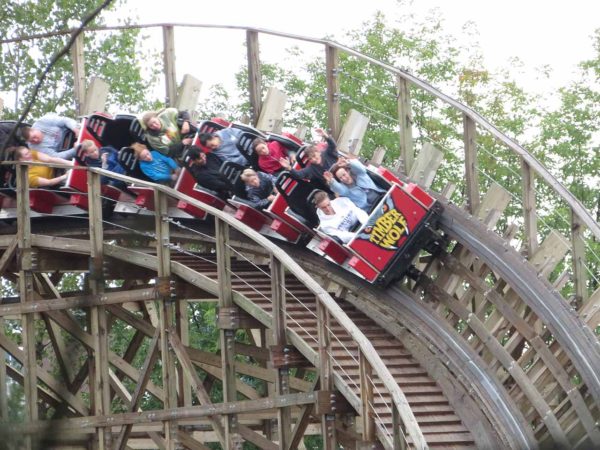
9. Scorpion at Busch Gardens Tampa Bay (1980)
Scorpion was Busch Gardens Tampa’s second roller coaster, opening in May 1980. The Anton Schwarzkopf coaster is one of only three “Silver Arrow” models built (all of which are still operating). The coaster opened as part of the second phase of the park’s new “Timbuktu” area. That area was renamed “Pantopia” in 2014. Following the closure of the park’s first coaster, Python, in 2006, Scorpion became the oldest operating coaster at the park.
The coaster is deceivingly intense, standing only 60 feet tall and features a top speed of 41 mph. Its one version — a 39-foot-tall vertical loop — is surprisingly forceful. The coaster exerts a maximum of 3.5 g-forces on its riders. Each of Scorpions 20-seat trains are lapbar-only, making for an unrestricted ride experience. The coaster’s 1,817 feet of track is tightly compacted into its small footprint. While intense, the coaster is a great “step-up” coaster for coaster enthusiasts in training.
8. American Eagle at Six Flags Great America (1981)
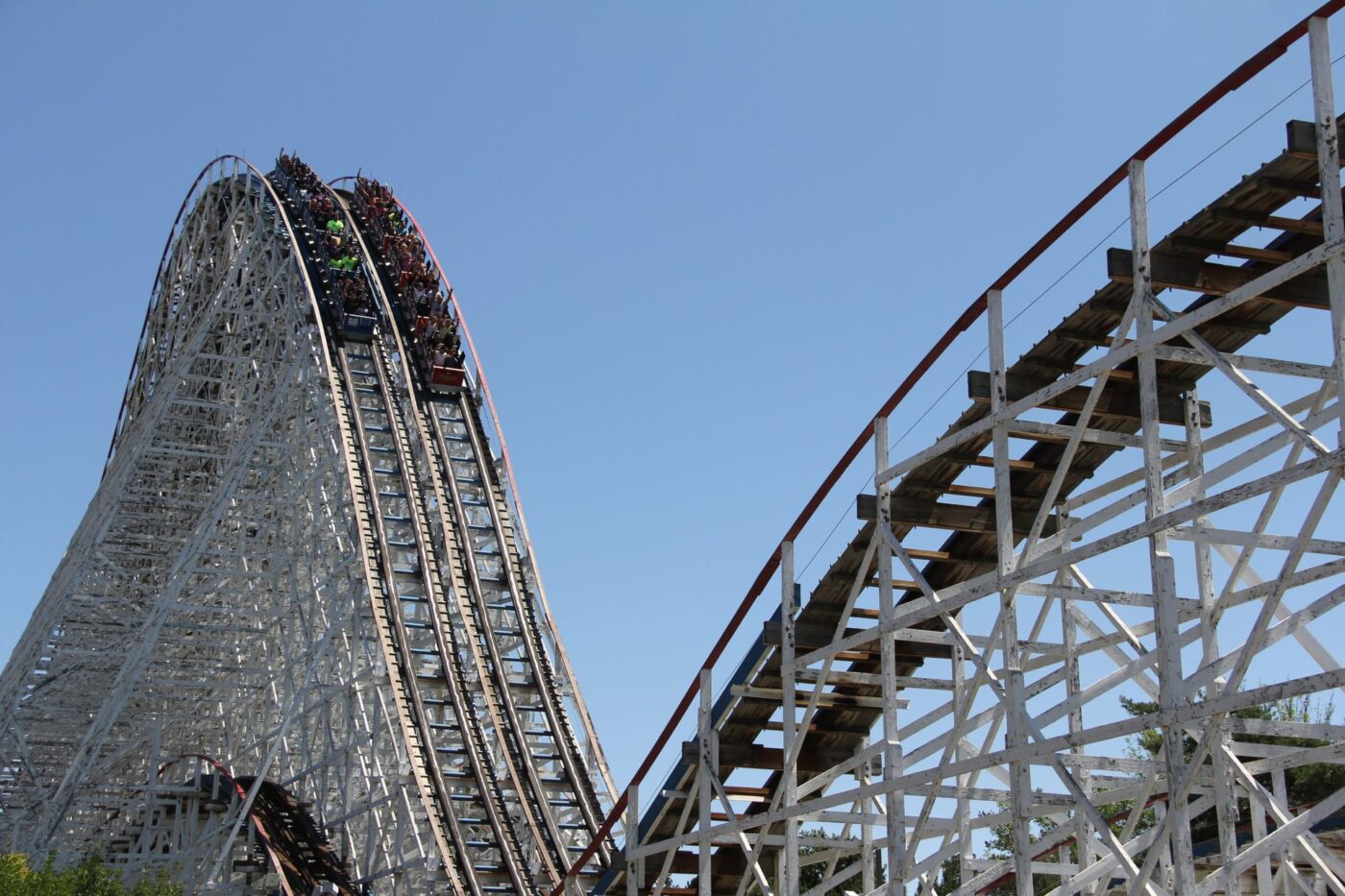 Opening in May 1981, the American Eagle racing wooden coaster at Six Flags Great America will turn 40 years old this year. A rare Intamin coaster (one of only six in operation today), American Eagle opened as the fastest wooden coaster in the world at 66 mph with the longest drop at 147 feet. The coaster taunts motorists on I-94 as they pass by its towering latticework, white structure. Its two tracks each stretch 4,650 feet in length. The 30-passenger trains maintain their momentum all the way to the brake run. The coaster was and still is a rite of passage for up-and-coming coaster enthusiasts.
Opening in May 1981, the American Eagle racing wooden coaster at Six Flags Great America will turn 40 years old this year. A rare Intamin coaster (one of only six in operation today), American Eagle opened as the fastest wooden coaster in the world at 66 mph with the longest drop at 147 feet. The coaster taunts motorists on I-94 as they pass by its towering latticework, white structure. Its two tracks each stretch 4,650 feet in length. The 30-passenger trains maintain their momentum all the way to the brake run. The coaster was and still is a rite of passage for up-and-coming coaster enthusiasts.
Over the last four decades, one of the racing trains has been reversed to create an even more exciting racing experience. In recent years, rumors have swirled over the years that American Eagle may receive the Rocky Mountain Construction (RMC) treatment and become a steel-tracked coaster with inversions and mind-boggling elements unique to RMC. While I’m a huge fan of RMC’s work, I’d rather American Eagle remain the wooden classic that it is.
7. Avalanche at Kings Dominion (1988)
Feel the rhythm, feel the rhyme, get on up, it’s bobsled time! Avalanche opened at Kings Dominion in 1988 as one of just six (and the only one in the United States) Bobsled Coasters ever created by MACK Rides. The trains are themed to different countries, and riders are seated in-line for the closest experience that 98% of people will ever have to an actual bobsled track. At a park like Kings Dominion, Avalanche can be slept on by a lot of people, and following the recent removals of Volcano: The Blast Coaster and The Crypt, it’s located almost on its own “island” in Safari Village. Point being, if you want to ride it, you might have to actually make the effort, because you’re not going to “happen” upon it.
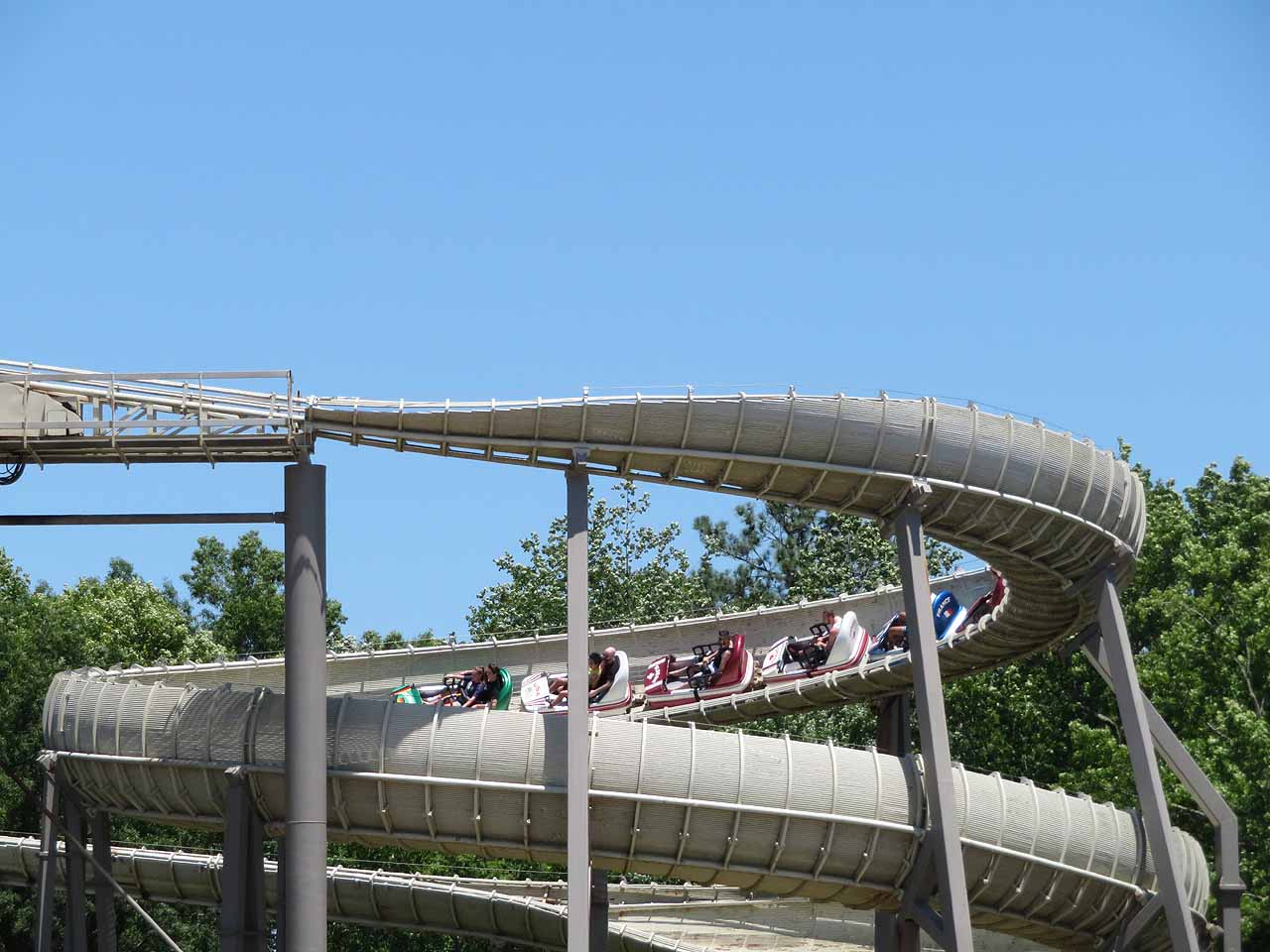
For those who do make the trek to Avalanche, you’re in for a very fun ride that has been in service for more than 30 years. With a top speed of 41 miles per hour, you never truly feel like you’re “out of control,” but the banked curves and helices throughout the 3,200 feet of track provide a mild level of thrill for even the most timid of coaster riders. Personally, we wish there were more bobsled coasters not only in the United States, but around the world, which is why we’ve included it on this list. -Andrew
6. Ninja at Six Flags Magic Mountain (1988)

The first of two Arrow suspended coasters on our list. It is one of just a handful of Arrow suspended coasters ever built, and even fewer still operating today. Suspended coasters are this weird case where despite the fact that they’re not particularly high intensity, enthusiasts love ’em. Something about those swinging cars that’s just inherently fun. Ninja actually is the fastest Arrow suspended at 55 mph, but that’s not the main reason we like it.
For Ninja in particular, it’s all about the terrain. Ninja sits on the slope of the hill in the middle of Six Flags Magic Mountain. That means that it runs close to the ground for a lot of the ride, which always adds to the sense of speed. It also means it actually drops further than the lift hill. Ninja is a rare coaster that ends with a chain lift back to the station, so it gets a lot more length and the speed than it feels like it should from the short initial climb. The hilly location also means thick trees surround the track, making for a more scenic and exciting ride. Lastly, it integrates well with the log flume next door, Jet Stream. The best coasters are ones that are designed especially with their locations in mind. The way Ninja fits with its spot in the park is why it’s one of our favorite coasters at Six Flags Magic Mountain and one of our favorite Arrow suspended coasters. – Eric
5. Grizzly at Kings Dominion (1982)
Sure, with the nearby Hurler recently going under the RMC knife and getting an improved ride experience as Twisted Timbers, it’s easy to compare Grizzly and Hurler and wonder why the latter got the gift of RMC track while Grizzly was left untouched. To us, it actually makes a ton of sense. Given its location and layout, Grizzly at Kings Dominion truly may be the single most underrated roller coaster in the park. It’s got a little bit of everything you want in a wooden coaster. It’s an ejector airtime machine. The airtime hill following the coaster’s second drop leaves you desperately trying to maintain your seat before ducking into a tunnel, and the rest of the coaster’s layout features a series of airtime hills that feel just the smallest bit out of control. Through the coaster’s tunnel, dipping in and out of darkness leaves you a little disoriented. The wooded setting leaves you guessing as to where the coaster will make its next move, and the feeling as you barrel into the brake run at the end of the coaster is a quintessential wooden coaster experience.
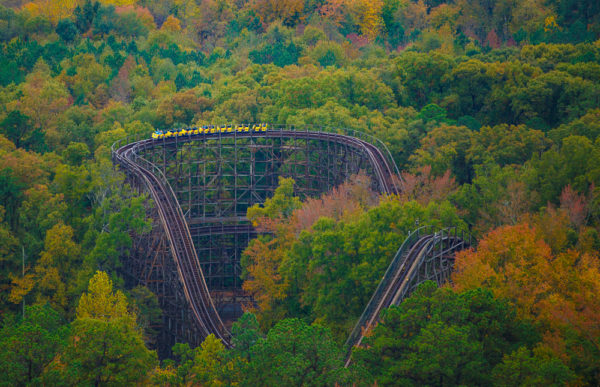
Arguably the best part of Grizzly is its setting that is best considered as “off the beaten path” of the midway. If you’re not deliberately looking for it, and don’t happen to wander into the Grizzly Gulch General Store, you might not even realize the coaster is in the park unless you happen to catch it from the top of the park’s Eiffel Tower, adding on to the mystique of this coaster that will turn 40 in 2022. -Andrew
4. Iron Dragon at Cedar Point (1987)
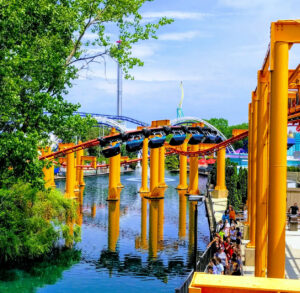 Opened in 1987 at a cost of $4 million, Iron Dragon is now the oldest and longest of the few remaining Arrow suspended coasters left in the world. the The height of its popularity was 1989 when 2,005,618 riders rode it. Interestingly, the rider height requirement was originally 48 inches, switched to 46 inches, then switched back to 48 inches in 2014. Despite this it remains one of the more family friendly and less intense coasters at Cedar Point, a nice change of pace. But for this reason it has gained the nickname “Dragging Iron.” In July 2016, VR was added to the ride during the evening hours to try to enhance the ride experience. VR was brought back in 2017 but later removed in 2018.
Opened in 1987 at a cost of $4 million, Iron Dragon is now the oldest and longest of the few remaining Arrow suspended coasters left in the world. the The height of its popularity was 1989 when 2,005,618 riders rode it. Interestingly, the rider height requirement was originally 48 inches, switched to 46 inches, then switched back to 48 inches in 2014. Despite this it remains one of the more family friendly and less intense coasters at Cedar Point, a nice change of pace. But for this reason it has gained the nickname “Dragging Iron.” In July 2016, VR was added to the ride during the evening hours to try to enhance the ride experience. VR was brought back in 2017 but later removed in 2018.
The highlights of the ride are the first drop, that ends up feeling steeper than it is thanks to the gradual angle of the ascent. The side-to-side descending curves off the second lift that swing you perilously close to Top Thrill Dragster are also great, followed up the pretzel finale over the lagoon is such an iconic photo spot.
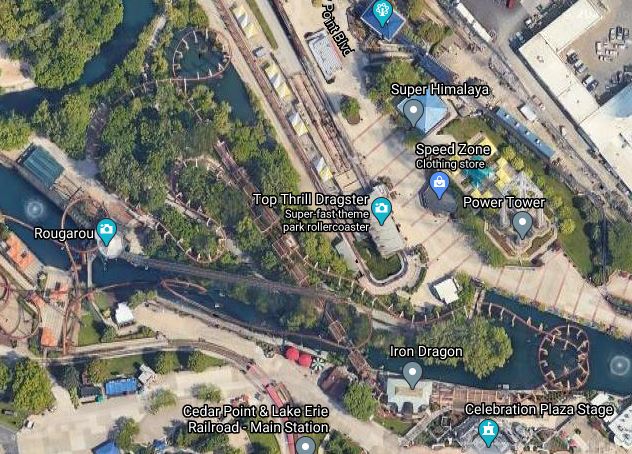
3. Big Thunder Mountain Railroad at Magic Kingdom (1980)
The Disneyland version of Big Thunder Mountain Railroad made our best of the 1970s list, so it’s maybe no surprise that the Magic Kingdom version makes this one. The Magic Kingdom layout is essentially a mirror of Disneyland. It’s basically the quintessential “Mine Train Coaster”, but with Disney touch on top of it. No, it’s not the most thrilling of rides, but here at Coaster101 that’s not our only standard. A fun layout, with great theming, and a smooth ride is plenty to make us love a coaster.
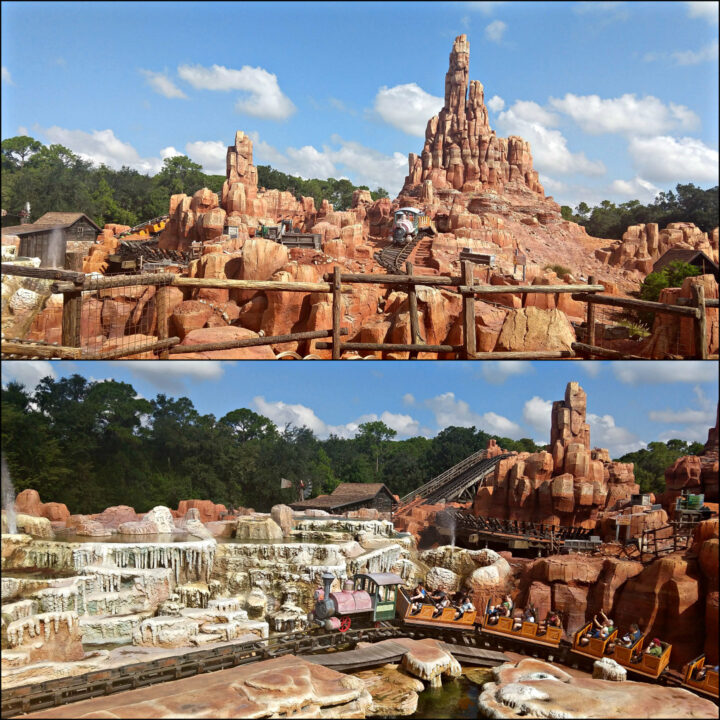
And where the East Coast version of BTMRR wins is that it’s on a bigger plot of land, so the amount of theming around the mountain and station is much more impressive. It even wowed this West Coaster who normally wants to say Disneyland is better. We do have to give the obligatory acknowledgement that the Paris version of Big Thunder, which opened in 1992, is probably the pinnacle of the ride. Still, we love them all!
2. Magnum XL-200 at Cedar Point (1989)
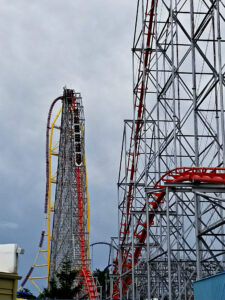 While Ron Toomer was in the park building Iron Dragon, Cedar Fair CEO Dick Kinzel took the opportunity to ask him what the tallest roller coaster in the world was. Toomer said he was building a 170 foot tall, multi-looping coaster at Six Flags Great America, later to be called Shockwave when it opened in 1988. Originally proposed as 187 feet tall, a board member asked how much additional would it cost to hit 200 feet and when the answer came back at only $100,000, Cedar Point decided to go for it. The “hyper” coaster was born. Magnum XL-200 was the first roller coaster to break the 200 foot barrier and the first to go over 70 miles per hour.
While Ron Toomer was in the park building Iron Dragon, Cedar Fair CEO Dick Kinzel took the opportunity to ask him what the tallest roller coaster in the world was. Toomer said he was building a 170 foot tall, multi-looping coaster at Six Flags Great America, later to be called Shockwave when it opened in 1988. Originally proposed as 187 feet tall, a board member asked how much additional would it cost to hit 200 feet and when the answer came back at only $100,000, Cedar Point decided to go for it. The “hyper” coaster was born. Magnum XL-200 was the first roller coaster to break the 200 foot barrier and the first to go over 70 miles per hour. 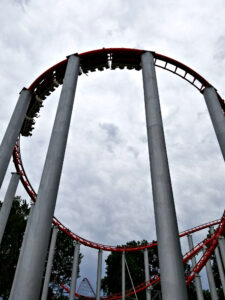 The coaster ignited the Coaster Wars, a period of about 10 years 1990s – early 2000s filled with record-breaking coasters and new types of rides, with parks constantly trying to outdo each other by opening taller, faster and longer coasters than ever previously created.
The coaster ignited the Coaster Wars, a period of about 10 years 1990s – early 2000s filled with record-breaking coasters and new types of rides, with parks constantly trying to outdo each other by opening taller, faster and longer coasters than ever previously created.
Inspired by the success of the inversion-less Japanese TOGO coaster Bandit, it was decided Magnum would not have any inversions. The coaster would have an out-and-back layout filled with airtime hills, more similar to a wooden coaster of the time. This template would be copied for years to come by other hyper coasters in the Cedar Fair and other park chains.
A ride on Magnum XL-200 is a memorable one even to this day: a seemingly never ending climb up the lift, a panoramic view of Lake Erie, the bowtie turnaround, three tunnels, and the thigh-bruising ejector airtime hills. The success of Magnum is nearly unmatched in the amusement industry: the $7.5~8 million cost of the ride paid for itself in one year. Magnum was the signature ride at Cedar Point for eleven seasons until Millennium Force opened in 2000. – Nick
1. Phoenix at Knoebels (1985*)
Ok, ok, we know this is a little bit of a cheat. Phoenix actually originally opened in 1947 as The Rocket at Playland Park in San Antonio, Texas. But the park closed in 1980 and it sat there standing but not operating (SBNO). In 1983 the Knoebel family bought it, dismantled it, and moved it to Pennsylvania. It opened there in 1985, as Phoenix, reborn from the ashes like the mythical bird. So, since we didn’t include it in our list of 1950s coasters, and it wouldn’t be operating if it hadn’t been rebuilt in 1985, we’re putting it here!
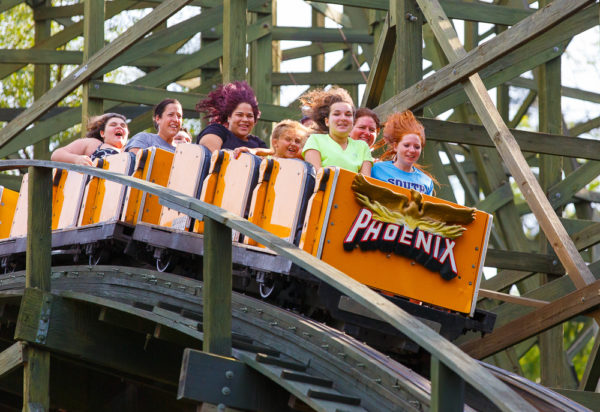
Now that we’ve got that out of the way, here’s why I love it: It’s the most insane airtime experience on a US coaster. Sure, modern RMC coasters give tons of air, but that mostly just leads to big thigh bruises because you’re stapled in. Phoenix is more like having no restraint — it’s just a buzz bar at the top of the seat, it doesn’t touch your body. As I wrote back after my first visit to Knoebels, Phoenix is like if you took the double down of Jack Rabbit at Kennywood and made it the whole ride. There were times I was literally standing up. It’s no wonder it consistently ranks as a top wooden coaster in the world, and that’s why it’s #1 on our list (even if it’s not quite an 80s coaster). Go ride it and sit in row 3, trust me. – Eric
Honorable Mentions
We briefly wanted to acknowledge a few 1980s coasters that we considered but didn’t quite make the list:
- Carolina Cyclone: The 1980 Arrow Looper at Carowinds made a few of individual lists, but not quite enough to make it. Still, it’s a solid Arrow coaster (with a great color scheme).
- Ice Mountain Bobsleds: We strongly considered this unusual alpine slide turned roller coaster at Enchanted Forest in Oregon. It’s definitely a unique ride that looks fun as heck, but sadly none of us have ridden it.
- Tig’rr: We love our Schwarzkopf coasters, and we talked a lot about how much we liked this one when we all went to Indiana Beach. It just missed our cut of the top 10, but we do love it.
*Please note: The Beast at Kings Island is not a 1980s coaster as it opened on April 14, 1979.*
So those are our favorite roller coasters from the 1980s still operating today! Like we said at the top, we’ve ridden a lot of coasters, but not all of them. So there’s always a chance we missed one. If we left off your favorite, let us know in the comments or tell us on Facebook or Twitter. And if we nailed it and your favorite coaster is on the list, tell us that too!



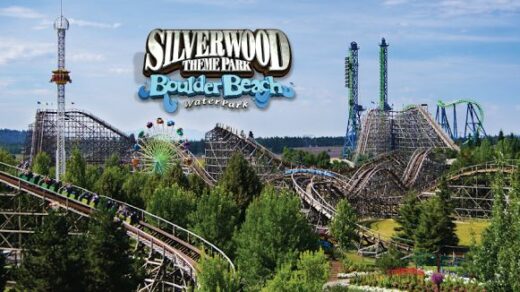
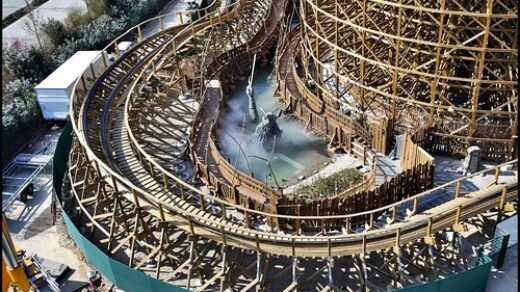



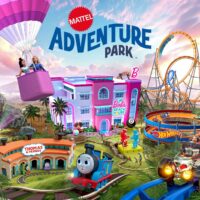





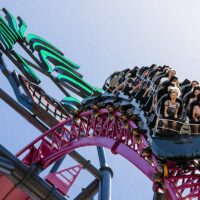
Glad American Eagle made the list. It’s my favorite. The first hill lasts forever, the helix is a blast, and racing is so much fun. I also hope they’ll give it some TLC and keep it a classic wooden coaster.
The Beast at Kings Island (1979, soooo close).
Viper – Darien Lake – 1982 – Arrow Dynamics. First coaster in North America to have 5 inversions. Lift hill – 124 feet tall.